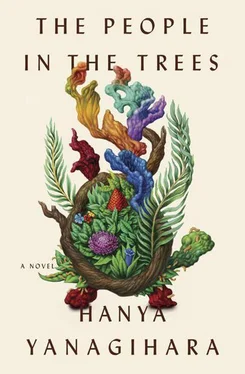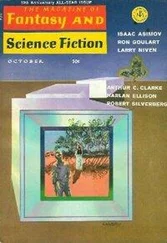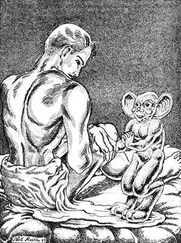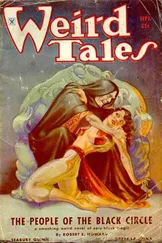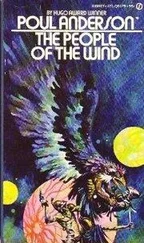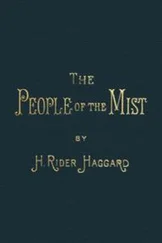Fairly or not, I found myself disappointed with Tallent. As I have said, I did not and do not consider anthropologists the most creative and disarming of thinkers — though they do take superlative and meticulous notes — but I had come to admire what I had grown to see as his single-mindedness. But he was also to be my first lesson in the strange phenomenon that besets all of us who travel to strange places and find our own assumptions and lessons proven not just wrong, but opposite. It is very easy to be intellectually brave in such locations, where the academy, one’s peers, and the entirety of Western history and religion feel not only irrelevant but misguided. But unlearning things is much more difficult than learning them, and even the most courageous of minds will find itself tempted to retreat back into the known at the first opportunity. It is astonishing and a little sad to realize how many discoveries, how many advancements, have been delayed for years, for decades, not because the information was unavailable but because of sheer cowardice, fear of being laughed at, of being ostracized by one’s colleagues.
Luckily, I was never limited by such worries or constrained by such fears (being ostracized by my colleagues seemed something to covet, not avoid). And so in 1953, I published a brief postulative paper 51—really nothing more than an announcement, the medical equivalent of Martin Luther posting his theses on the church’s wooden door 52—in a small, now-defunct journal called the Annals of Nutritional Epidemiology . In it I revealed my findings: not only were a significant percentage of the mice from the first group that had eaten the opa’ivu’eke still alive, but so were the mice from the second and third groups. 53
It is very difficult for my biographers and for younger scientists to comprehend when I tell them with what ridicule, what scorn, what hatred this paper was received. The Annals of Nutritional Epidemiology was at best an obscure publication, but somehow my essay seemed to be read by people who would not normally have troubled themselves with such journals, and in the coming months the Annals (rather pantingly, I thought) published all manner of letters from various doctors and scientists outraged that this sort of “childish fiction and robust fantasies” should be taking the place of real science, etc., etc. The fellows in the adjoining lab — still bitter at my youth, my space, and my mysterious funding — took to dropping by under the pretense of talking to Cheolyu, whom they’d update with fresh insults about my work that they’d recently overheard from this chemist or that biologist. (The fact that Cheolyu would only gape at them and every now and again blink his small eyes behind his glasses until they triumphantly flounced out seemed not to register with them at all.)
Did any of this bother me? No, it did not. I was certain I was correct — more and more certain, in fact, when, with each passing month, the opa’ivu’eke-fed mice lived on, their little lives stretching out, a thin elastic line, longer and longer — and as I have said, it was not in my nature to listen to the chatter of others, especially others for whom I had no particular regard.
However, I was also not impractical. The one, the only frustrating thing about my paper’s less-than-enthusiastic reception was that it would retard my ability to make for myself the kind of life I had decided I wanted. I have spoken before about my fundamental ambivalence about lab life, and this was still true. But if the rhythms of the lab were not necessarily always the most stimulating, the rhythms of my own lab were. Being left alone — without oversight, without having to report to anyone, without having to manage someone else’s pointless projects — was a glorious freedom, and one I realized very quickly I wanted for myself. I wanted to perform my own experiments. I wanted to write what I wanted, to answer what I wanted, to follow my every passion and curiosity. In order to do that, I would need my own lab. And in order to have my own lab, I would need funding, which meant I also needed to be proven, very quickly, legitimate.
I spent much of my time brooding over this apparently insurmountable problem, gazing at nothing while Cheolyu fed the mice and made notes and dealt with the dreamers (with whom I was working less and less). And then, beginning in late February of 1954, two things happened in quick succession that would change my fate. The first came in the form of a letter from, of all people, Adolphus Sereny. In his short note, Sereny congratulated me on my successful return from U’ivu and — revealing himself a secret herpetologist — my essay on the opa’ivu’eke. More important, though, he admitted himself intrigued by my paper in Nutritional Epidemiology and expressed interest in re-creating my experiments. I of course immediately responded. Sereny was a respected scientist with a well-organized lab. If he could successfully replicate my findings (and I had no doubt that he would), it would confer on me an almost instant and absolute acceptance and validity, which would in turn lead to the sort of life and intellectual freedom I craved. Even I could not help but appreciate the irony of my situation: Sereny, who I had thought hated me! I had Cheolyu carefully pack one of the opa’ivu’eke’s legs, 54along with complete copies of my data and detailed instructions on dosing, etc., and sent it off to Cambridge.
The second thing that happened was that the mice from both the first and, to a lesser extent, the third study began demonstrating dramatic signs of mental decay. At this point, the mice from the first group were fifty-one months old and those from the third group forty-six months old. I was not exactly unprepared for this; even as I had readied the paper for publication the previous summer, Cheolyu had noticed that the mice in the first group had been behaving oddly: they would run in tight circles, so quickly and crazily that their feet would tangle up in one another and they would fall onto their backs, kicking their paws in the air and chirping. Or they would press their noses into a corner of the cage and make strange, unrodentlike gulping gestures, opening their little mouths and closing them again and again. They would do this for hours sometimes, their azalea-pink eyes wide open and unblinking. This made sense to me; after all, they had at that point been alive slightly longer than twice their natural lifespan, the same point at which the dreamers had begun to demonstrate their first symptoms of mo’o kua’au-ness. What was truly exciting was the behavior that they were demonstrating as they reached the point at which they would be alive for three times as long as their natural lifespan, or about the equivalent of Eve’s age. And indeed, as I had hoped, their deterioration had become suddenly more profound. Seven months before, they had experienced periods of lucidity, when their behavior was still recognizably mouselike: they ran in their wheels, they burrowed in their snowfalls of shredded paper, they picked up the pieces of food we gave them with their two front paws and nibbled away. Now, however, the twenty-three mice who remained had lost even those basic behavioral reflexes.
Later I would be asked how and why I had decided not to reveal these findings. But it was hardly a decision that was mine to make. As I have said, no one was exactly clamoring for my thoughts on anything, much less mice with extended lifetimes who were displaying progressive dementia. Even if I had wanted to say something, no one would have listened. However, I must admit that something else — I hate to use such a term as precognition , but there it is — also kept me silent. I knew even then that one day soon my discoveries would be legitimized and appreciated for what they were, and that in the mice’s behavioral deterioration was not only the next step in the narrative but my next challenge. I had already proven that the opa’ivu’eke could prolong life; now I had to discover how it might do so without delivering in tandem its terrible punishment.
Читать дальше
